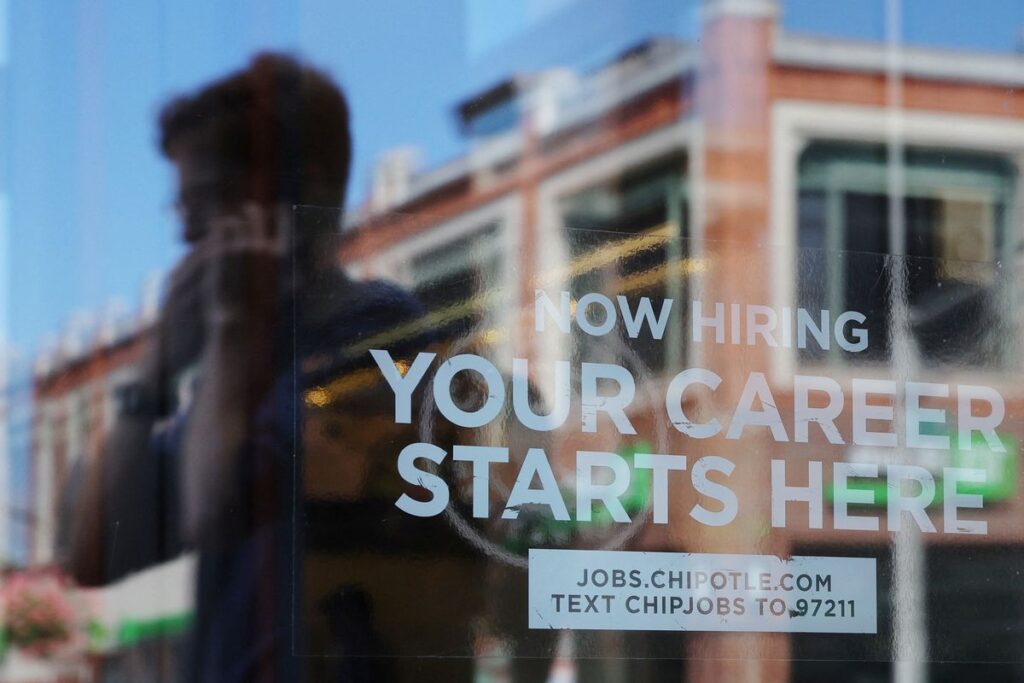US employers added a solid 187,000 jobs in August in sign of a still-resilient labor market | Economy and Business

The nation’s employers added 187,000 jobs in August, evidence of a slowing but still-resilient labor market despite the high interest rates the Federal Reserve has imposed.
Last month’s job growth marked an increase from July’s revised gain of 157,000, but still pointed to a moderating pace of hiring compared with the sizzling gains of last year and earlier this year. From June through August, the economy added 449,000 jobs, the lowest three-month total in three years. In addition, the government revised down the gains for June and July by a combined 110,000.
Friday’s report from the Labor Department also showed that the unemployment rate rose from 3.5% to 3.8%, the highest level since February 2022 though still low by historical standards. But the rate rose for an encouraging reason: A sizable number of people — 736,000 — began looking for work last month, the most since January, and not all of them found jobs right away. Only people who are actively looking for a job are counted as unemployed.
Indeed, the proportion of Americans who either have a job or are looking for one rose in August to 62.8%, the highest level since February 2020, before Covid-19 slammed into the U.S. economy.
A decelerating job market could help shift the economy into a slower gear and reassure the Fed that inflation will continue to ease. The central bank’s streak of 11 interest rate hikes has helped slow inflation from a peak of 9.1% last year to 3.2% now. Given signs that inflation is slowing, many economists think the Fed may decide no further rate hikes are necessary.
Friday’s jobs report also showed that wage gains are easing, a trend that may help signal to the Fed that inflation pressures are cooling: Average hourly pay rose 0.2% from July to August, the smallest such gain in a year and a half. Measured year over year, wages last month were up 4.3% from August 2022, slightly below the 4.4% increase in both July and June.
The Fed wants hiring to slow because intense demand for labor tends to inflate wages and feed inflation. The central bank hopes to achieve a rare “soft landing,” in which its rate hikes would manage to slow hiring, borrowing and spending enough to curb high inflation without causing a deep recession.
“This is close to what the Fed wants to see,” said Gus Faucher, chief economist at PNC Financial Services Group. The August jobs report “could be a way to a soft landing.”
Still, Faucher cautioned that the economy may not have yet absorbed the full impact of the Fed’s rate hikes, which is why he still expects a recession in early 2024.
Economists noted that among sectors of the economy, by far the biggest hiring gain last month — 97,000 — came in the healthcare industry, which does not depend on the rise and fall of the economy. Construction companies added 22,000, factories 16,000, bars and restaurants nearly 15,000.
By contrast, trucking companies shed 37,000 jobs, reflecting the shutdown of the Yellow trucking company. And music and movie companies lost 17,000, a drop that the Labor Department attributed to striking Hollywood actors and writers.
Taken as a whole, some economists saw Friday’s report as reflecting an economy that may be returning to its pre-Covid state, before the pandemic recession struck in 2020, followed by an explosive economic recovery.
“The 187,000 gain in non-farm payrolls, jump in the unemployment rate and slowdown in wage growth in August all add to the evidence that labor market conditions are approaching pre-pandemic norms,” Andrew Hunter of Capital Economics wrote in a research note.
Optimism about a soft landing has been growing. The economy, though growing more slowly than it did in the boom that followed the pandemic recession of 2020, has defied the squeeze of increasingly high borrowing costs. The gross domestic product — the economy’s total output of goods and services — rose at a respectable 2.1% annual rate from April to June. Consumers continued to spend, and businesses increased their investments.
The Fed wants to see hiring decelerate because strong demand for workers tends to inflate wages and feed inflation. So far, the job market has been cooling in the least painful way possible — with few layoffs. The Labor Department reported Thursday that the number of Americans applying for unemployment benefits — a proxy for job cuts — fell for a third straight week.
Instead of slashing jobs, companies are posting fewer openings — 8.8 million in July, the fewest since March 2021. And American workers are less likely to leave their jobs in search of better pay, benefits and working conditions elsewhere: 3.5 million people quit their jobs in July, the fewest since February 2021. A lower pace of quits tends to ease pressure on companies to raise pay to keep their existing employees or to attract new ones.
Economists and financial market analysts increasingly think the Fed may be done raising interest rates: Nearly nine in 10 analysts surveyed by the CME Group expect the Fed to leave rates unchanged at its next meeting, Sept. 19-20.
Sign up for our weekly newsletter to get more English-language news coverage from EL PAÍS USA Edition

